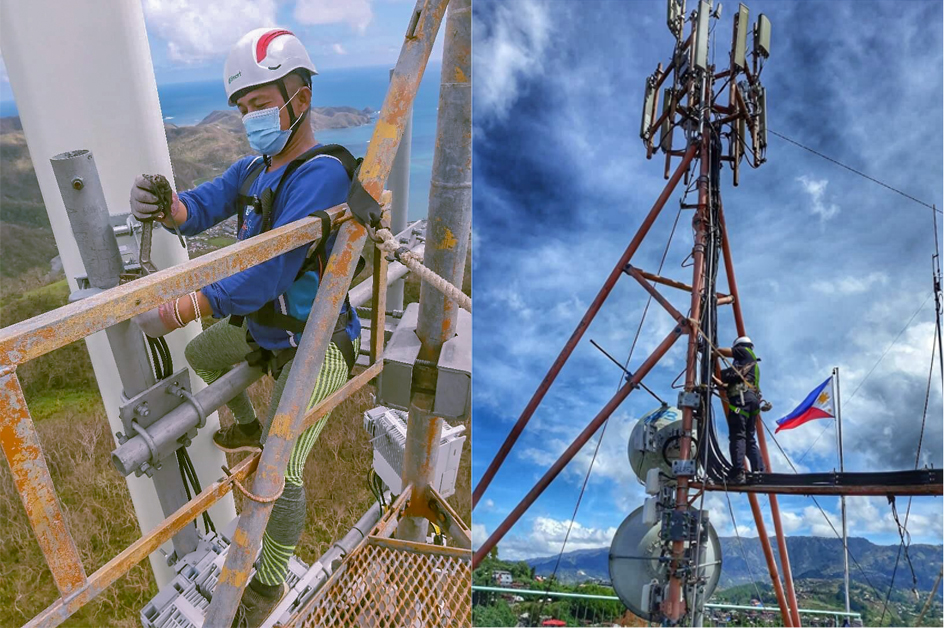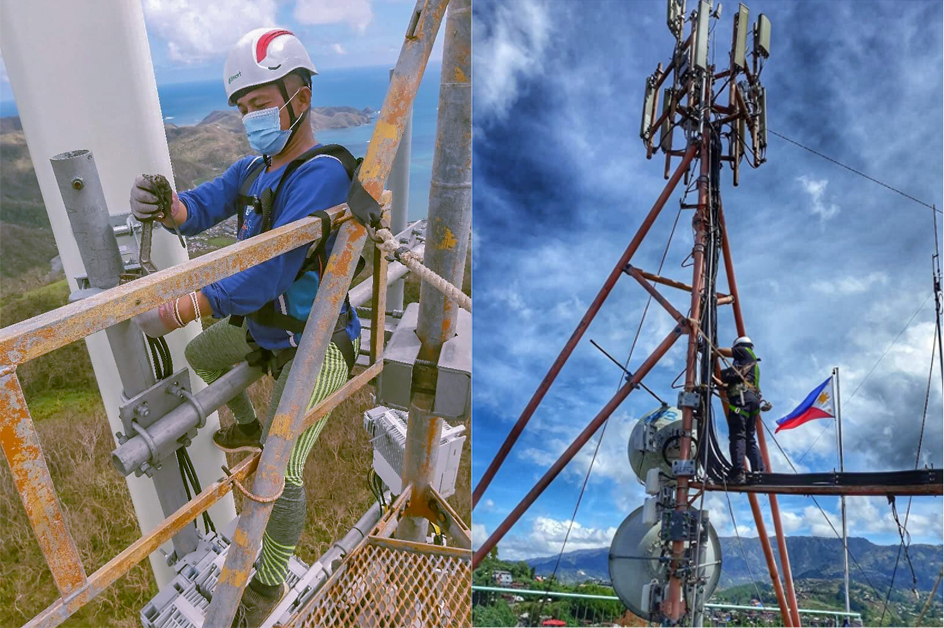
Continuous investments in improving their fixed and wireless network and their customer support services have enabled the Philippines’ largest integrated telco PLDT and its wireless subsidiary Smart Communications, Inc. (Smart) to provide better speeds and quality of service to their customers in the second half of the year.
“The PLDT-Smart network expansion went full throttle this year, in response to the surge of demand for connectivity and data. It was not easy, but we managed to set all systems in motion to enable us to expand the reach and capacity of our fixed and wireless networks across the country amid the challenges brought about by the pandemic,” said Alfredo S. Panlilio, Smart Communications President and CEO and PLDT Chief Revenue Officer.
“We continue to invest in a superior network with better fiber systems, LTE, and most recently, 5G. And we are working double-time on our nationwide expansion program, particularly fiber rollout and migration. Being able to help Filipinos navigate through challenges by giving them means to rebuild their lives definitely entrenches PLDT-Smart’s position in the life and future of our customers,” he added.
Network expansion
In 2020, PLDT and Smart further accelerated the rollout of their fixed and wireless networks to deliver better customer service. PLDT’s fiber infrastructure, the most extensive in the country, is now at more than 422,000 kilometers as of November.
This fiber infrastructure supports Smart’s mobile network, which now covers 94% of the population. As of November, Smart has also increased the number of its LTE and 3G base stations to over 58,000, while also rolling out an additional 313 5G base stations as it accelerates its 5G commercial services nationwide. Total homes passed is at 8.7 million for the same period.
To further improve coverage and connectivity, Smart is rolling out an additional 2,000 cell sites next year. Since the Anti-Red Tape Authority issued its Joint Memorandum Circular in August, Smart has secured over 1,600 permits to build more cell sites and accelerate the telco’s goal to improve customer experience across the country. These permits cover towers to be built in Metro Manila and in typhoon-impacted provinces like Albay, Aurora, Batangas, Bulacan, Cagayan, Camarines Sur, Cavite, Isabela, Laguna, Masbate, Quezon, Rizal, and Sorsogon, which were in the path of recent strong typhoons Rolly and Ulysses, to name a few.
Resilient network
These investments also include efforts to make the network more resilient.
PLDT recently fired up its fiber-optic link to Catanduanes island, ensuring service resiliency in one of the country’s most typhoon-stricken provinces. This network upgrade came on the heels of Smart’s quick restoration of telco services in Catanduanes, the first telco firm to do so after super typhoon Rolly (international name: Goni) disrupted communications there last month.
PLDT is also laying down underground fiber optic cables in the Bicol region and in Samar province, which are frequented by strong typhoons, further making their digital infrastructure backbone more resilient.
Third-party studies
These network investments have resulted in performance levels that have been widely cited by third-party organizations like Ookla, Opensignal, and umlaut.
According to independent mobile analytics firm Opensignal’s latest Mobile Network Experience Report on the Philippines, Smart leads in mobile network experience, particularly in terms of 4G Availability, 4G Coverage Experience, Video Experience, and Download and Upload Speeds.
Earlier reports released this year by Opensignal also noted “impressive improvements” in mobile network experience in the Philippines since 2017 as Filipinos spent more time on 4G/LTE. Download Speed Experience in the country has also increased by around 80% between the fourth quarter of 2017 and the first quarter of 2020, with Smart consistently in the lead over the last two years. In another study, Opensignal also noted improvements in mobile network experience across five regions: National Capital Region, North & Central Luzon, South Luzon, Visayas, and Mindanao between Q4 2018 and Q3 2020. The analysis looked at improvements in Video Experience, 4G Availability, Download Speed Experience, and Latency Experience on a regional level.
On the other hand, PLDT and Smart were also found to have the country’s fastest fixed and mobile internet networks based on analysis by Ookla, the global leader in internet testing and analysis. The results were based on tests taken with Speedtest(R) covering the first half of 2020. Previously, PLDT and Smart were also hailed by Ookla as the fastest fixed and mobile networks in the Philippines in 2018 and 2019.
“Based on our own internal data, Smart’s average download speeds nationwide have stayed ahead of competition this year. In Metro Manila, customers with devices with modern chipsets already experience average download speeds of 47 Mbps,” said Joachim Horn, PLDT chief technology and information advisor, adding that in cities like Cebu and Davao, Smart’s speeds on devices with modern chipsets are already at 33 Mbps and 37 Mbps, respectively, and that nationwide, this figure is at 35-37 Mbps.
Meanwhile, after consistently staying ahead of the competition, Smart posted a “good” score of 750 in umlaut’s benchmarking survey, breaching the 700-level for the first time in the third quarter of 2020, and is on track to reach the level of global tier 1 operator in two years. According to Germany-based umlaut’s mobile wireless benchmark trend, Smart has consistently led by a large margin over its competitor, even as umlaut’s standards became tougher each year.
Beefing up customer support
PLDT and Smart are also beefing up their customer support services in response to the increased demand for internet connectivity. Although affected by pandemic restrictions, PLDT and Smart have made adjustments in their work processes and gradually scaled up their ability to build and repair. Network expansion continued despite pandemic conditions. When the quarantine restrictions eased up, manpower began to increase and PLDT-Smart stores reopened to serve more customers.
“Our goal is to keep on challenging how we work so we continue to improve in finding ways to make things easier and simpler for our customers. Our direction is to go digital — thus the drive to enable our customers to do more online: get their bills, pay their bills, get help. This is also a needed shift given the global situation today where customers must stay safe in their homes,” said PLDT-Smart First Vice President and Commercial Operations Head Marco Borlongan, adding that most stores have re-opened, network teams are working to fulfill installation and repair requests, and the call center is back to serving customers 24/7.
The new work-and-study-from-home arrangements have resulted in an increase in the volume of calls that PLDT and Smart receive daily, including plan upgrades, as well as repairs and billing concerns, according to PLDT-Smart Vice President for Consumer Care Chiqui Abad, who added that resolution of customer issues depends on the concern. Product or billing-related queries are generally resolved at point of interaction, while some repair-related concerns may need a technician to be dispatched to resolve the issue and thus may take longer. PLDT said its network service teams have been able to steadily ramp up the company’s installation capacity to meet the continuously growing demands, whereas customer support services are also now operational, including its call center, the PLDT Smart app, and a self-service portal called myHome.
“We have also added new channels, like an SMS channel, and are strengthening our digital channels, so customers can have other ways of reaching us aside from 171,” Abad said.
These initiatives form part of PLDT’s investments in capital expenditures, which have totaled Php 432 billion from 2011 to September 2020. PLDT’s expansion efforts and investments helped the Group cope with sustained growth in data traffic when COVID-19 community quarantines commenced in March. PLDT is anticipating capex of at least P70 billion for 2020.
